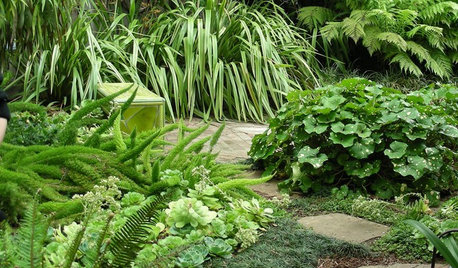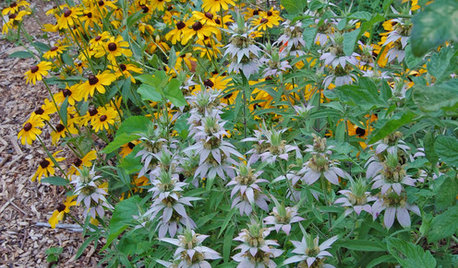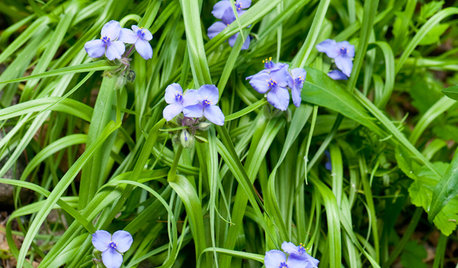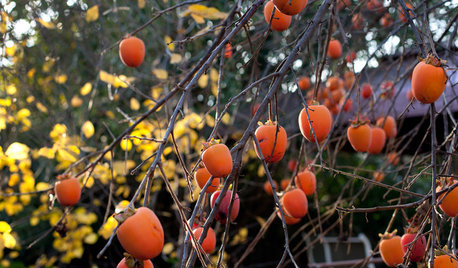Combining plants for my new garden
lisa2004
19 years ago
Related Stories

PLANTING IDEAS8 Sumptuous Shade Garden Plant Combinations
Enjoy these plant combinations made for spots with varying levels of shade and different garden zones
Full Story
NATIVE PLANTSPlant These Fall-Flowering Natives in Early Summer for Pollinator Love
These 3 groups of plants will support masses of beneficial insects come autumn
Full Story
NATIVE PLANTSGreat Design Plant: Wild Bergamot, Friend of Foragers
Nourish butterflies and other winged creatures with the tubular flowers of Monarda fistulosa, a pretty pink native
Full Story
GARDENING GUIDESGreat Design Plant: Cephalanthus Occidentalis
Buttonbush is an adaptable woody shrub with delightful pincushion flowers
Full Story
GARDENING GUIDESGreat Design Plant: Butterfly Milkweed, a Beacon in the Prairie
Vivacious orange flowers for you, nectar for the butterflies and bees. Asclepias tuberosa is worth planting for more reasons than one
Full Story
GARDENING GUIDESGreat Design Plant: Spotted Beebalm (Monarda punctata)
Looking for unusual, long-lasting blooms, low maintenance and deer resistance? Try this self-sowing perennial
Full Story
GARDENING GUIDESGreat Design Plant: Tradescantia Ohiensis Adds Shades of Blue
This reliable, adaptable U.S. native provides spider-like foliage and clusters of blue to purple flowers in Eastern gardens each spring
Full Story
GROUND COVERSNative Alternatives to English Ivy, Japanese Pachysandra and Periwinkle
These shade-loving ground covers are good for the environment and say something about where you are
Full Story
WINTER GARDENING10 Native Wildflowers to Beautify Your Winter Garden
They stand strong in wind, feed wildlife and are easy to grow. But you may want to add these plants for their looks alone
Full Story
EDIBLE GARDENSGreat Design Plant: Persimmon
Combining beautiful fruit, vivid fall leaves and low maintenance, this tree is a winner in the garden
Full Story





gardengal48 (PNW Z8/9)
kdjoergensen
Related Professionals
Salisbury Landscape Architects & Landscape Designers · Walnut Landscape Architects & Landscape Designers · Belmont Landscape Contractors · Berkeley Heights Landscape Contractors · Cicero Landscape Contractors · Dedham Landscape Contractors · Desert Hot Springs Landscape Contractors · Eureka Landscape Contractors · Firestone Landscape Contractors · Huntley Landscape Contractors · Lake Saint Louis Landscape Contractors · New Braunfels Landscape Contractors · San Rafael Landscape Contractors · Tamarac Landscape Contractors · Forney Swimming Pool Buildersgardengal48 (PNW Z8/9)
waplummer
lgkovalcik
gardengal48 (PNW Z8/9)
ego45
lisa2004Original Author
loris
jugglerguy
lisa2004Original Author
ego45
Sue W (CT zone 6a)
ego45
lavendargrrl
knottyceltic
susan6